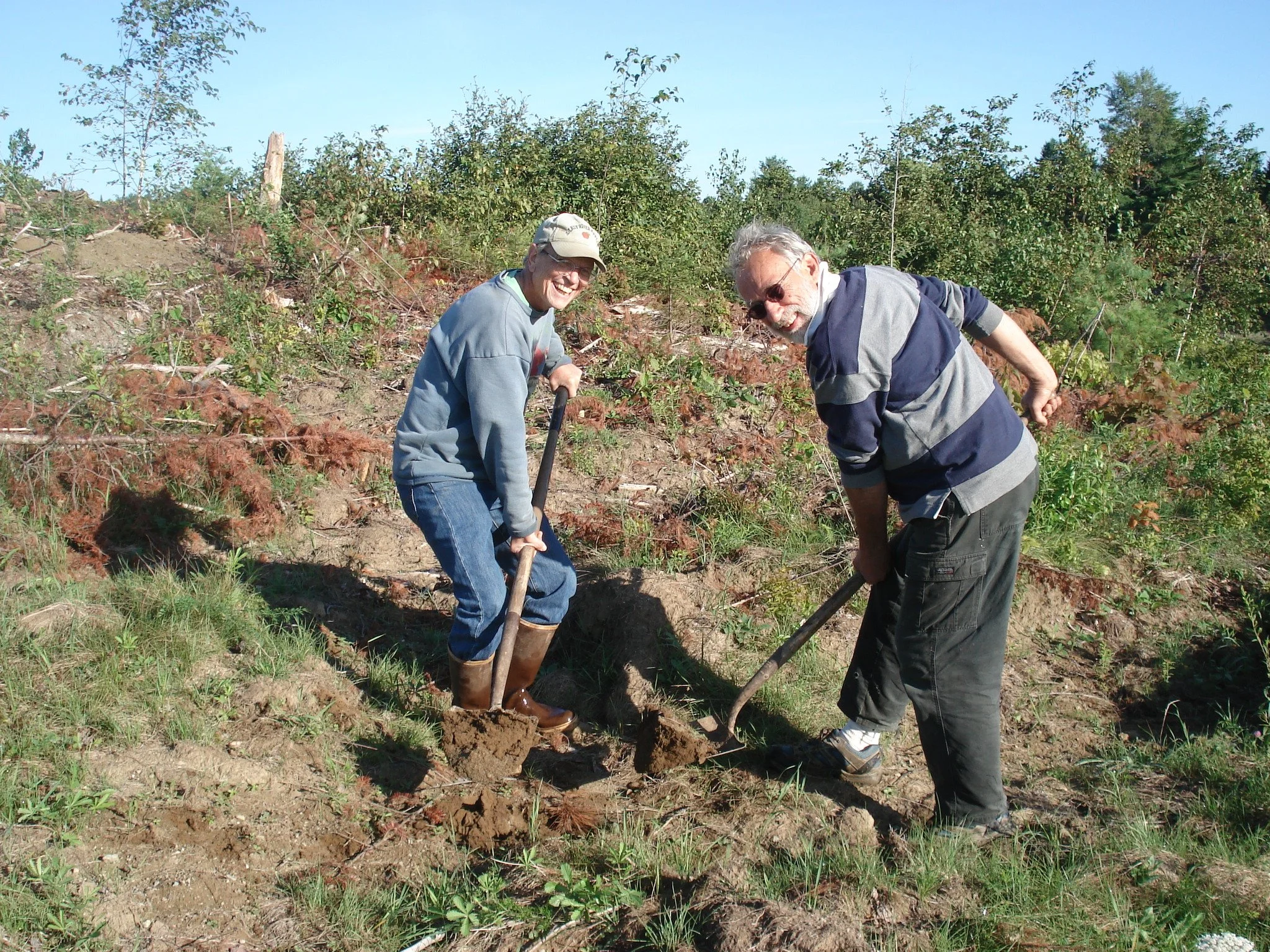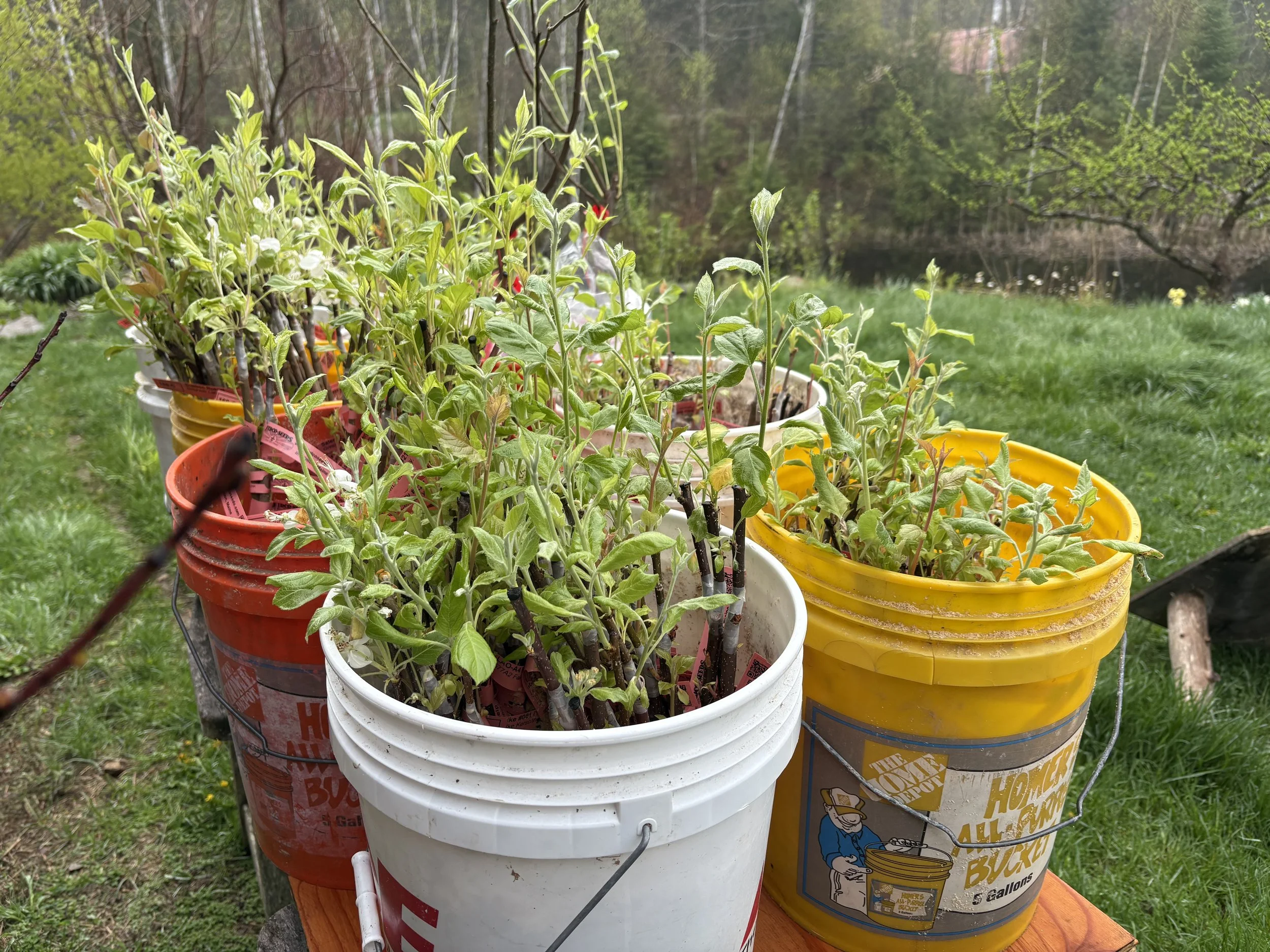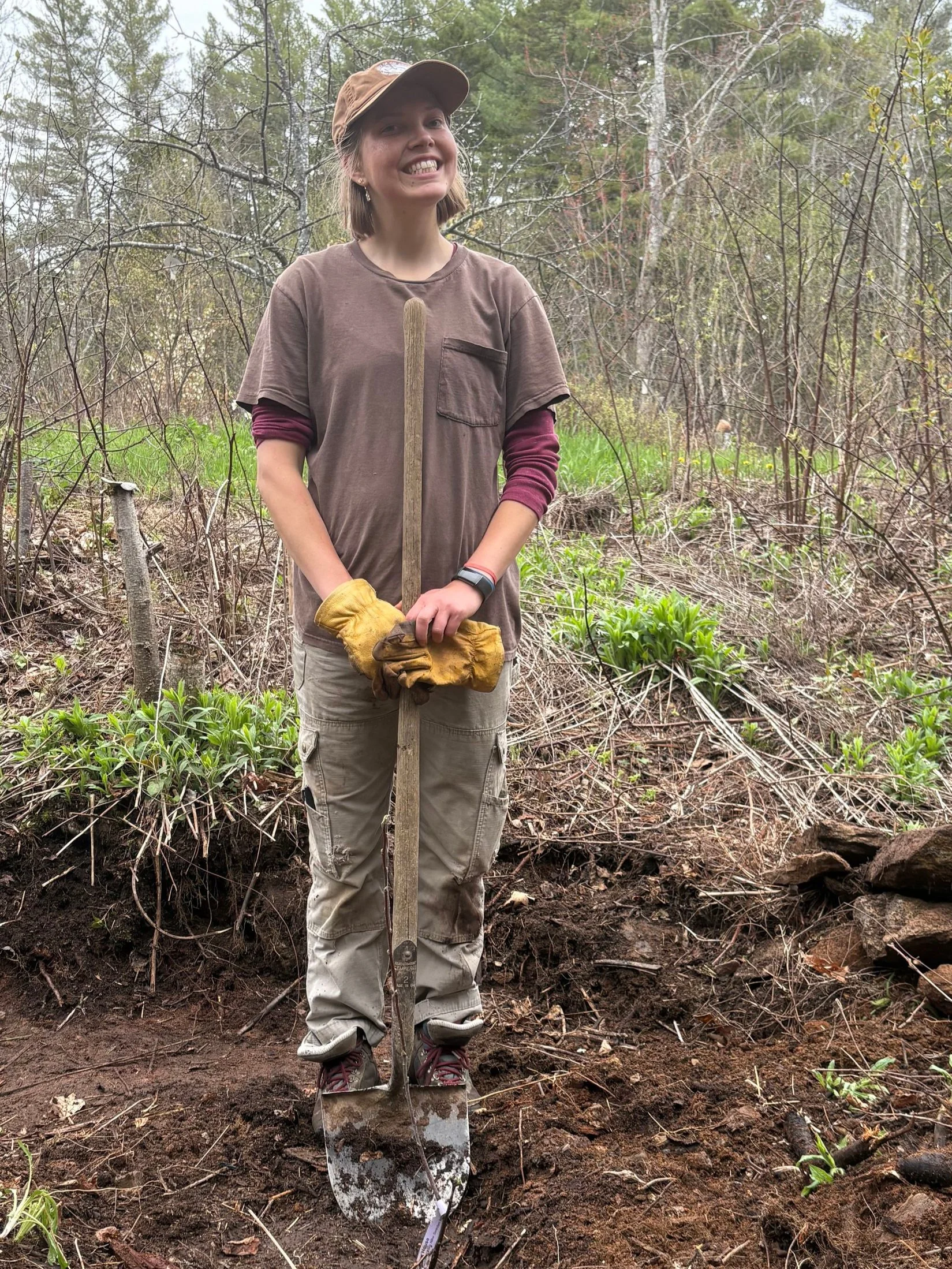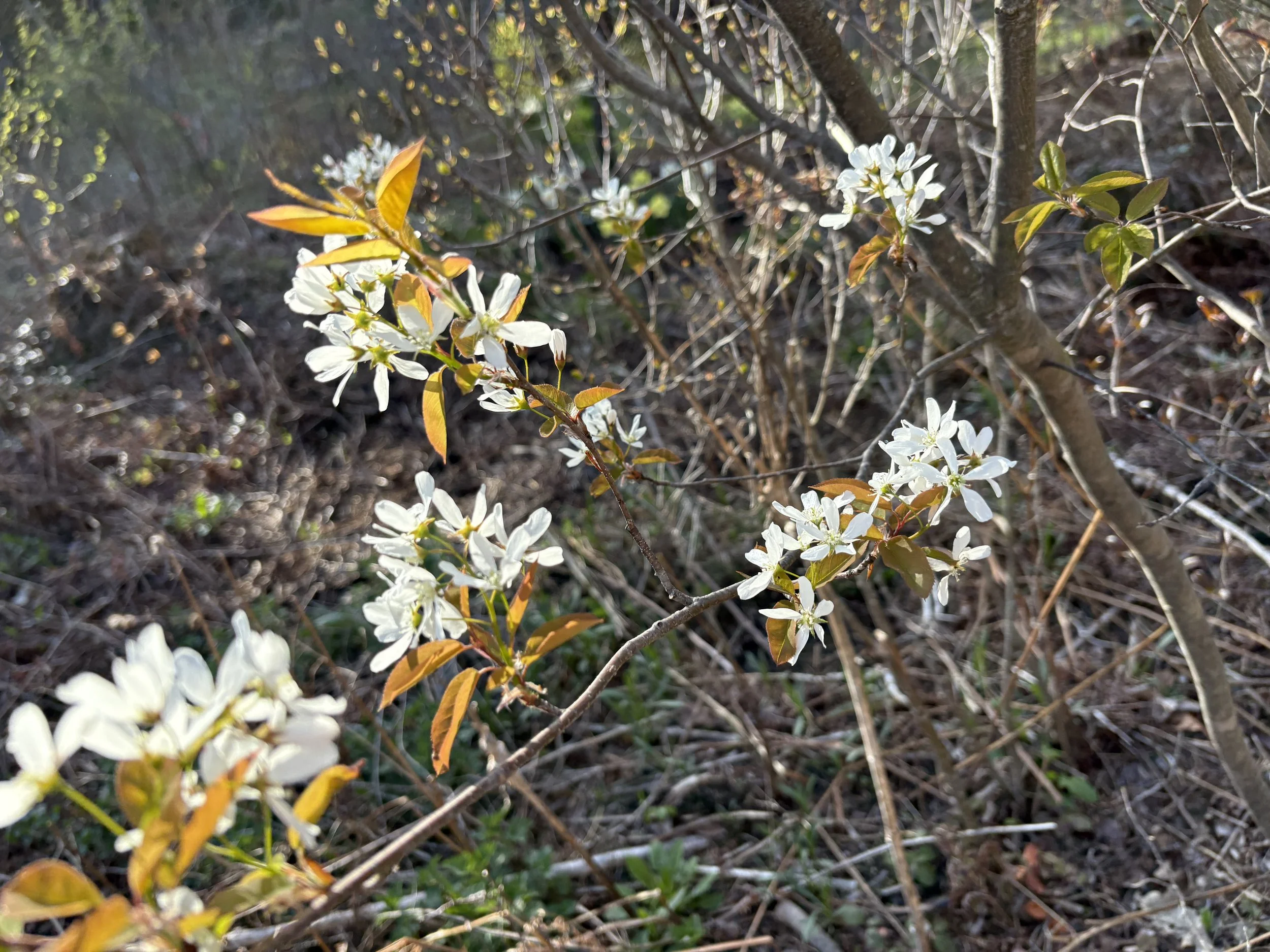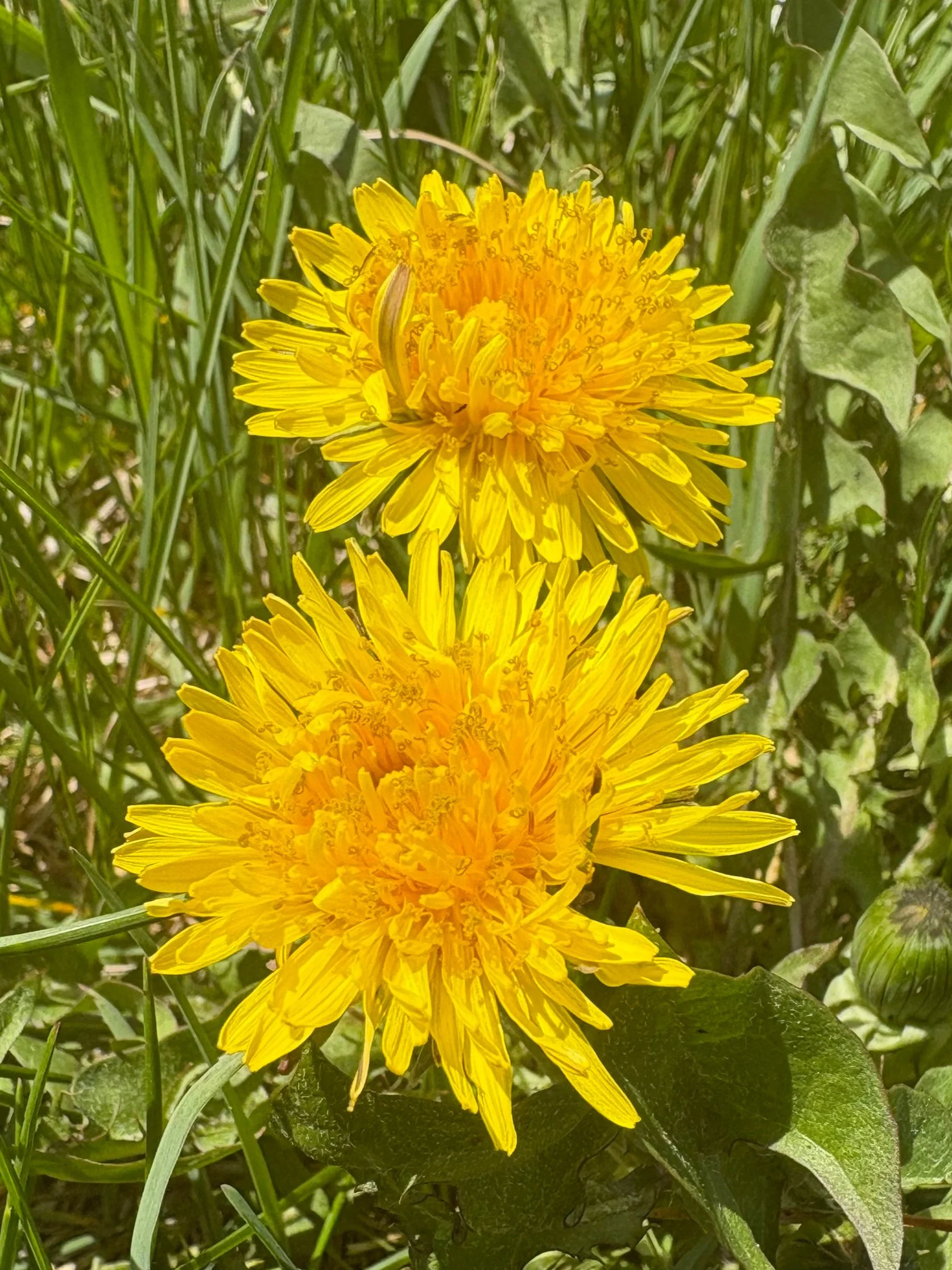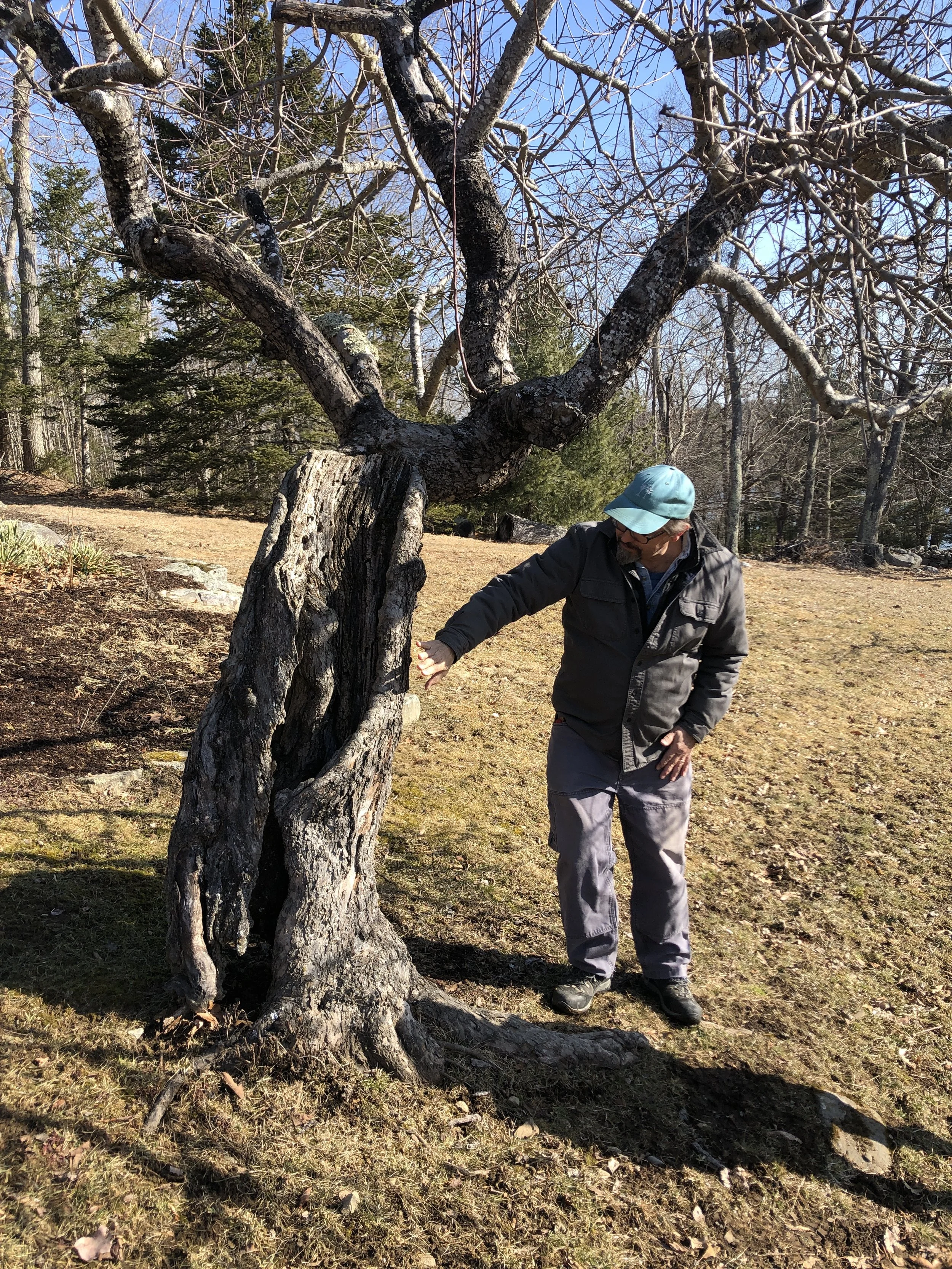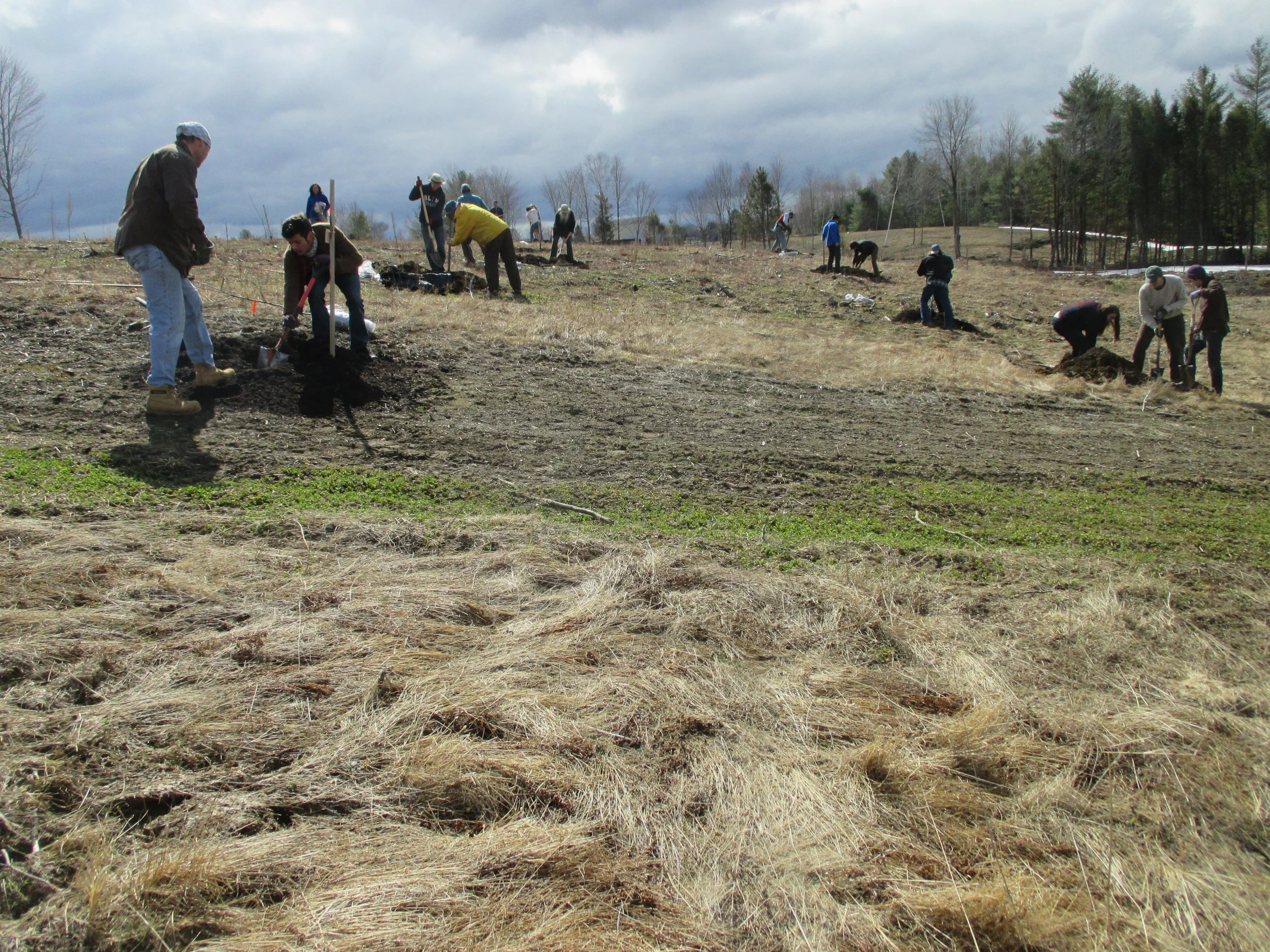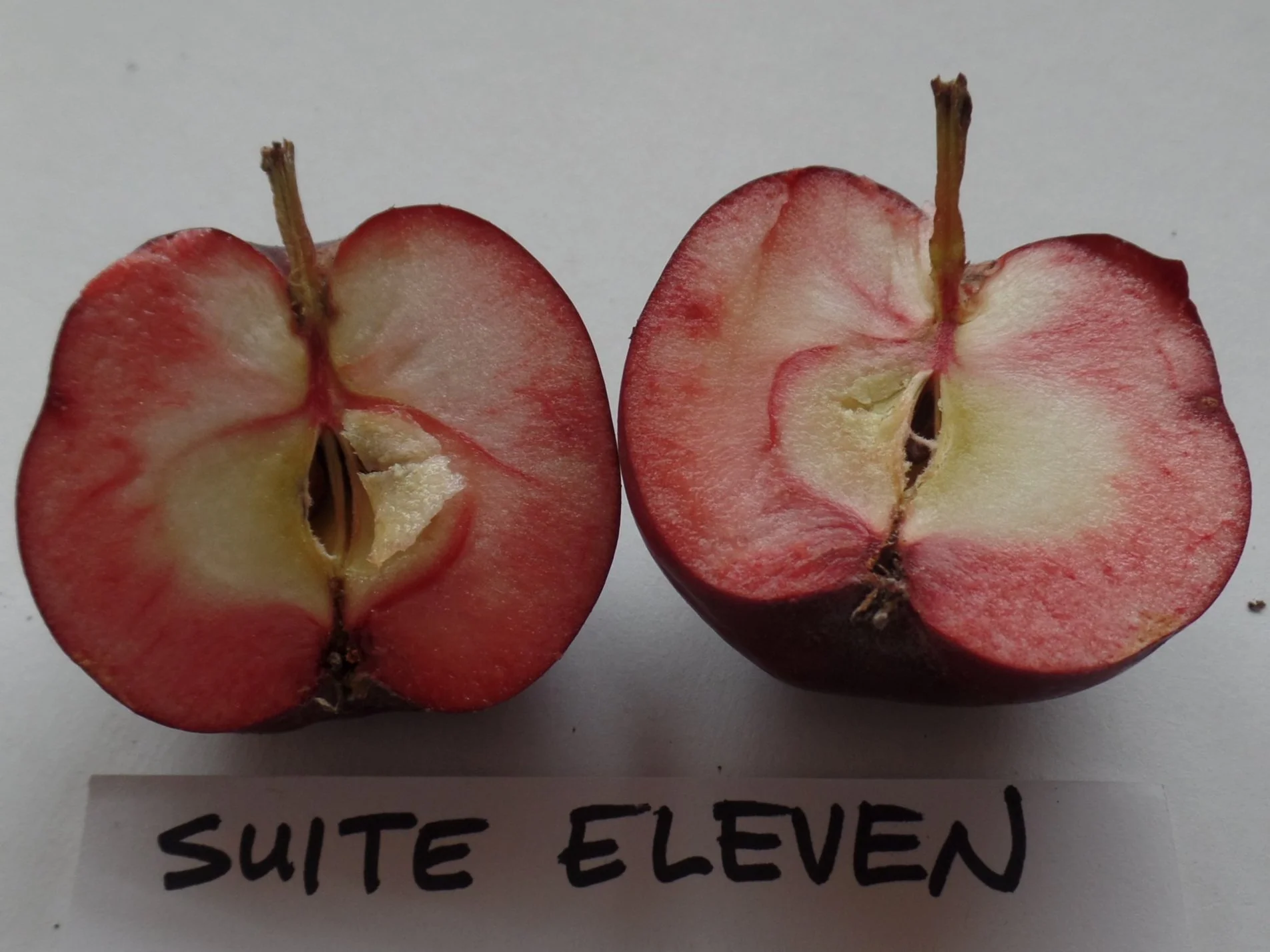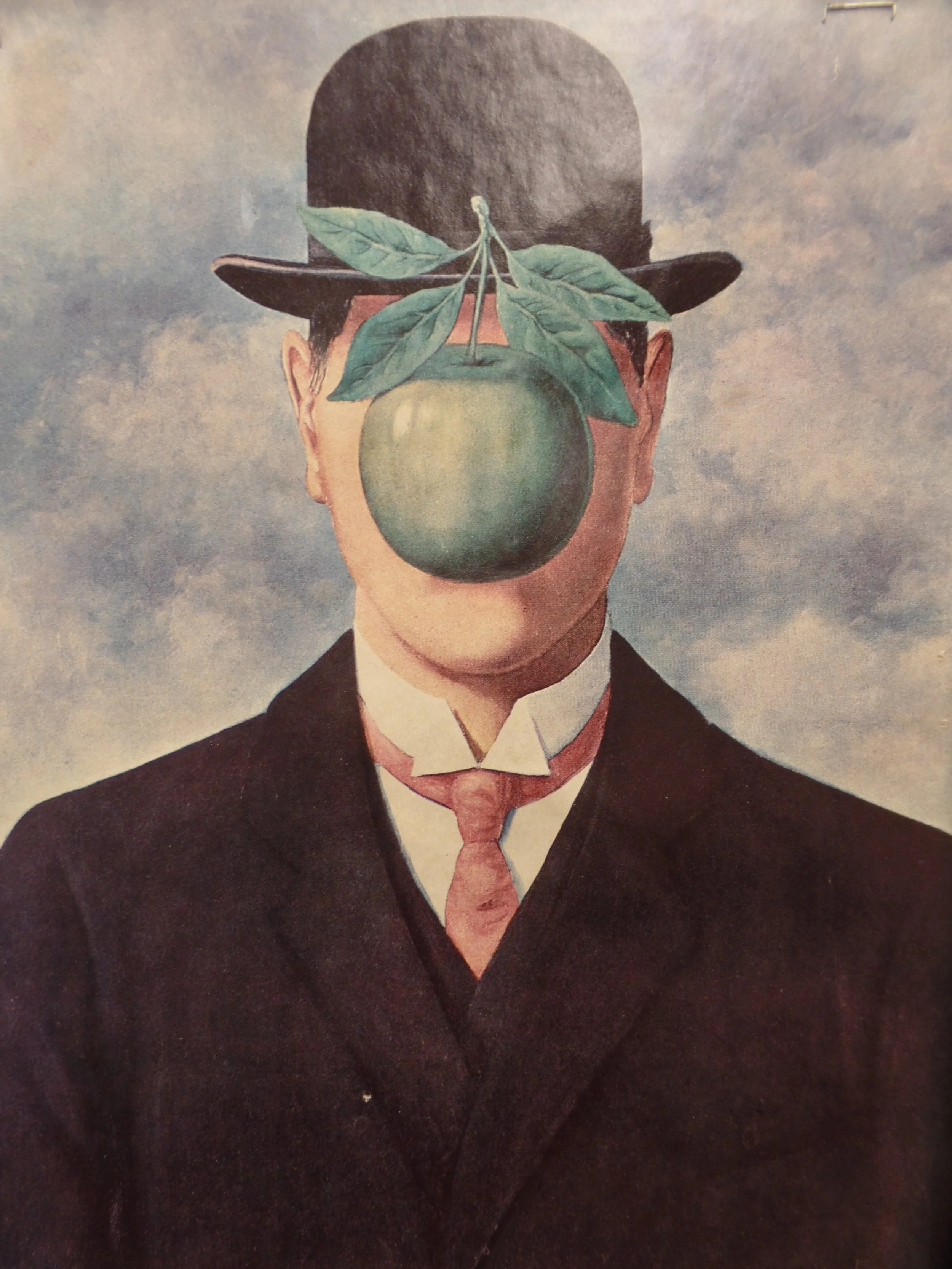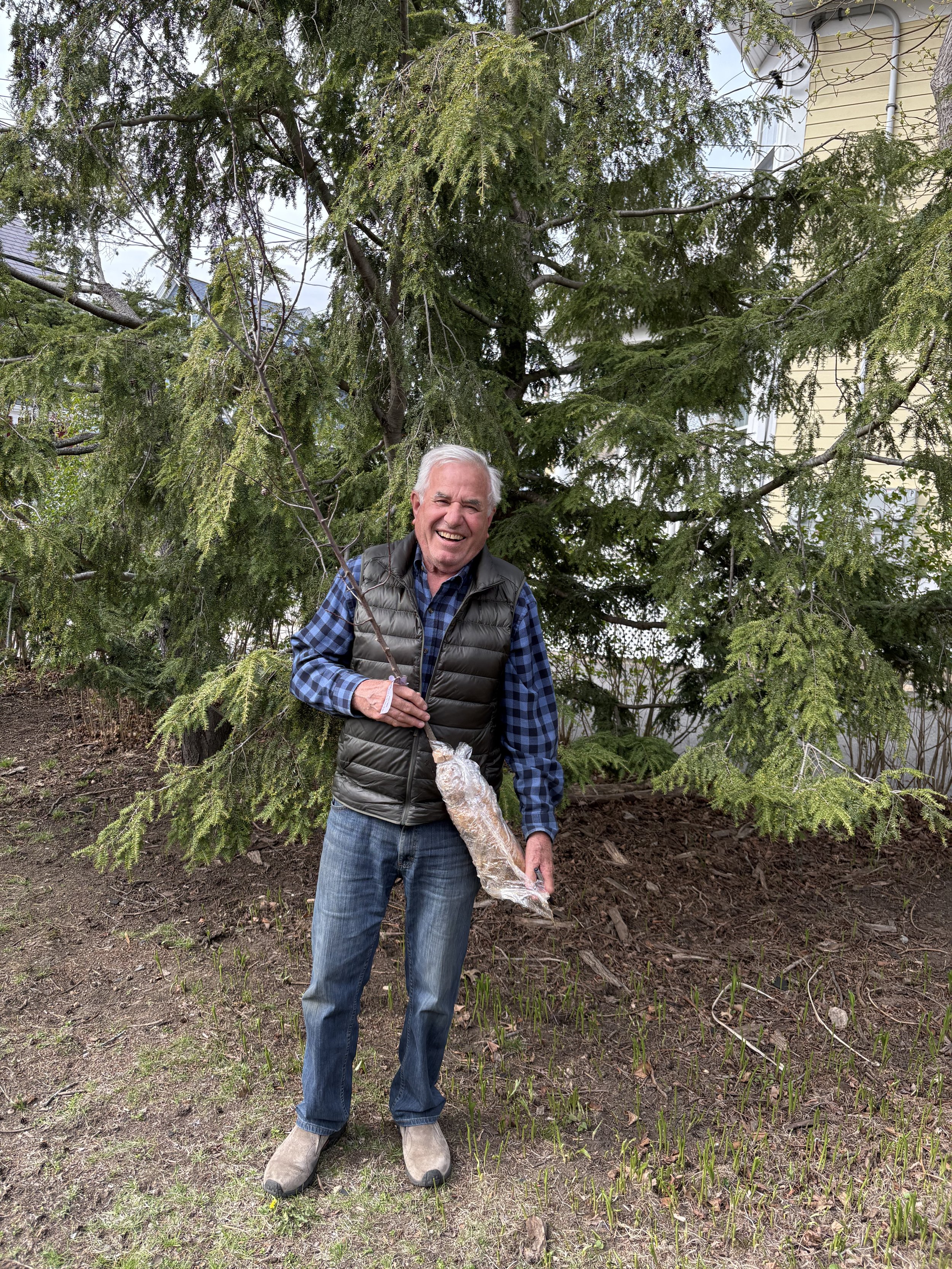Today in the orchard
Topworking seedlings with Rebecca, Finley Lane, May 11, 2025
The bark is finally starting to slip in central Maine, so we have begun topworking in the orchard. It has been delayed this year by the cold weather. We did our first grafts today, although I could tell that it will be better in another day or two. A year ago we could easily slide in the scions on May 8. This year the best topworking should be on May 13 or 14, almost a full week later. The season is not long so it’s time get out your knife and scionwood and go for it. A few friends and neighbors came over for a lesson—it being Sunday—and we had a productive “class.” In our Finley Lane orchard we have hundreds of seedlings, and I set them loose to practice their knife-work on them. It’s nice to see sharp knives being put to good use. We will do the bulk of our topworking midweek.
Seth the neighborhood beekeeper stopped by to check his hives. The bees are doing well. They are already making honey, and we sampled a couple of finger-fulls. It was delicious. He’ll be dividing hives in the next few days.


